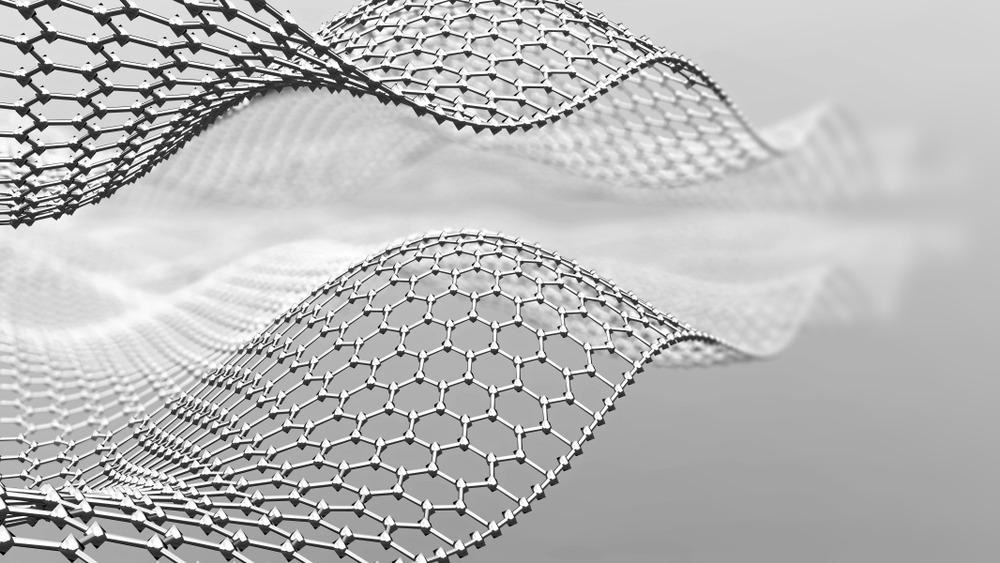 By Surbhi JainFeb 21 2022Reviewed by Susha Cheriyedath, M.Sc.
By Surbhi JainFeb 21 2022Reviewed by Susha Cheriyedath, M.Sc.In an article recently published in the journal Results in Physics, the researchers presented a strategic approach for the development of ultra-compact graphene-based plasmonic devices. They also discussed the reconfiguration capabilities of these devices.

Study: Reconfigurable ultra-compact graphene-based plasmonic devices. Image Credit: Neon_dust/Shutterstock.com
Background
Meta-devices, which are artificial electromagnetic media made up of active functional materials and plasmonic structure, have received a great deal of interest in a variety of domains, including sensing, imaging, data storage, and optical communications. Many novel ways for dynamic control of meta-devices have been documented.
However, the majority of these solutions run into technological hurdles. To achieve completely functional signal processing in an integrated circuit, it is necessary to develop components that can regulate the output power ratio in waveguides and the surface plasmon polariton (SPP) propagation directions. Metal-based electronics make the development of highly reconfigurable and integrated system devices more difficult.
Various solutions have been presented in recent years to tackle these challenges. The two-dimensional material graphene has recently attracted interest for a broad range of applications, including tunable filters, Bragg reflectors, intersections, sensors, beam splitters, perfect absorbers, and optical switches, and the results serve as important references for graphene-based meta-device design and construction.
The monolayer graphene exhibits a variety of optical and electrical properties, but most significant is the flexible surface conductivity that can be tweaked by voltage and chemical doping, paving the path for the development of reconfigurable devices with tunable functionality.
About the Study
In the present study, the authors developed and explored an ultra-compact graphene-based plasmonic device in which the SPP propagation direction was flexibly adjusted by varying the chemical potential of graphene. The manipulation of the graphene SPP propagation direction resulted in plasmonic devices with a variety of functionalities, including splitter and router. The photonic integration system, which included nanoscale multiplexers, multifunctional devices, and on-chip routing, required the specified structure.
An ultra-compact adjustable plasmonic device with numerous functions was presented that could be dynamically controlled by modifying the direction of graphene SPP propagation. The proposed structure was made up of graphene nanoribbons, and the device's various capabilities were obtained in real-time by changing graphene's chemical potential.
Multiple functions were realized in the proposed structure, and the presented device was an ultra-compact structure because of the use of graphene nanoribbons. Using the finite-difference time-domain (FDTD) approach, the performance of the structure was evaluated.
More from AZoM: Absorption Atomic Spectroscopy Analysis of Biofuels
A half graphene nanoring and four graphene nanoribbons were used to develop the multifunctional structure. The FDTD method with perfectly matched layer (PML) absorbing boundary conditions was used to analyze the device's performance quantitatively, and the results demonstrated that the proposed design had potential applications towards the integration of nanoscale devices.
Observations
In this study, the researchers observed that the effective index of the graphene waveguide and the gate voltage applied to graphene was changed to regulate the propagation direction of SPP. The SPP at the wavelength of 6879.86 nm only traveled through Port 1 when the chemical potential of graphene in the lower arm (µc) was 0.32 eV, and the crosstalk was kept below -20.2 dB.
Meanwhile, the SPP transmitted only through Port 2 at a wavelength of 5861.56 nm. Furthermore, it was discovered that adjusting the chemical potential of graphene in the lower arm regulated the supported transmission wavelengths of two ports, and raising the chemical potential of graphene corresponding to the lower arm caused a blue shift in the supported transmission wavelengths of two ports.
The resonant wavelengths of the two ports were observed to decrease as the chemical potential of graphene in the lower arm increased. It was also determined that increasing the chemical potential of the graphene waveguide in the bottom arm increased the resonant wavelength difference between the two ports.
It was also observed that the proposed structure not only functioned as 1 x 4 splitters but also as 1 x 2 splitters when the gate voltage applied to the graphene in the arm waveguide was changed. Photonic integration devices and on-chip routing circuitries were shown as potential applications of the active tuning of both functions.
The presented device possessed functions of optical switch and logic gates in addition to beam splitting and routing. For example, "ON" and "OFF" were readily realized by altering the applied chemical potential of graphene nanoribbon.
Conclusions
In conclusion, this study proposed and investigated a graphene-based ultracompact plasmonic device. The authors elucidate that the SPP propagation direction can be controlled by changing the effective index of the graphene waveguide, according to a theoretical analysis based on interference theory. They also highlighted that the FDTD method supported the analysis results.
The authors emphasized that by altering the gate voltage supplied to graphene in the arm waveguide, a multifunction device can be produced. The authors believe that these findings open up a new avenue for designing multifunction devices, and they could have applications in photonic integration systems such as nanoscale multiplexers and on-chip routing systems. This work also demonstrated that the proposed device has a lot of promise and a bright future in the wavelength-division-multiplexer system.
Disclaimer: The views expressed here are those of the author expressed in their private capacity and do not necessarily represent the views of AZoM.com Limited T/A AZoNetwork the owner and operator of this website. This disclaimer forms part of the Terms and conditions of use of this website.
Source:
Feng, Y., Zhao, Y., Liu, Y., et al. Reconfigurable ultra-compact graphene-based plasmonic devices. Results in Physics 34, 105331 (2022). https://www.sciencedirect.com/science/article/pii/S2211379722001139